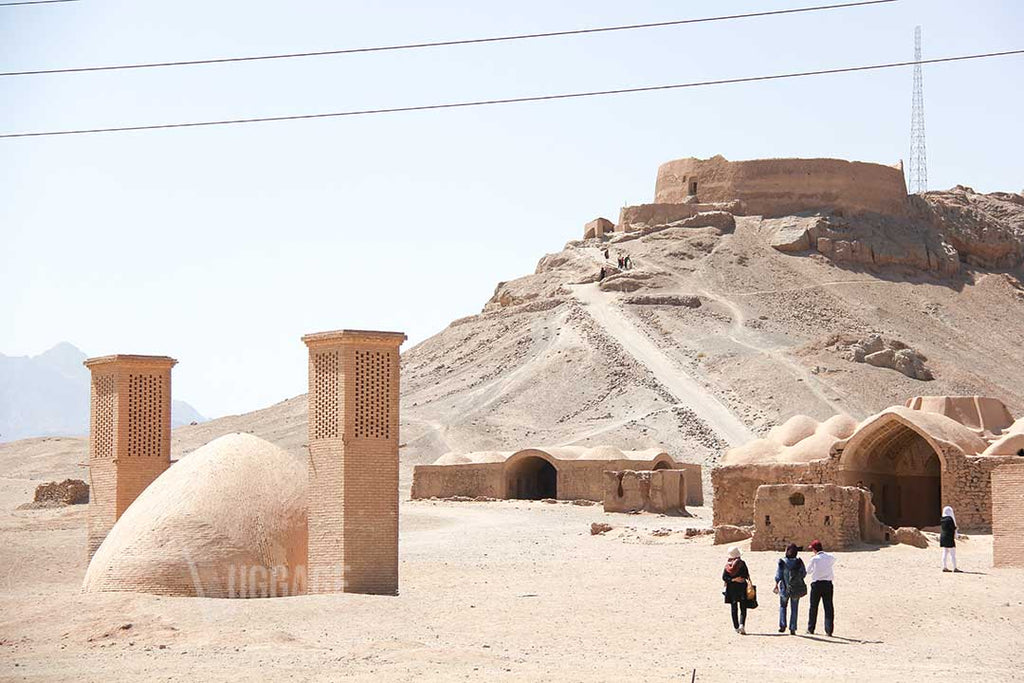The historical city of Yazd in central Iran was inscribed on UNESCO's World Heritage List on July 9, 2017. Known also as a city in the desert, it is famous for its adobe (building bricks made of earth/clay/straw) architecture, Zoroastrian fire temples as well as unique structures that facilitate living in a desert (e.g. windcatchers, Yakchal - structures to store ice in desert during summer). For us, the most amazing experience was to get 'lost' in the maze-like city centre (a little like CounterStrike's de_dust map!), and seeing how cars navigate through these super-tight spaces.
We spent a total of 1.5 days (2 nights) in Yazd.
Expenses for 2 persons: S$337 (Hotel - S$135 , Meals - S$76, Transport - S$63, Entrance tickets - S$57, Shopping - S$4)
Things to Do / Places to see in Yazd
How to get to Yazd: We took a 5-hour bus ride (220,000IRR / S$9.60 per pax) from Isfahan to Yazd, which dropped us off at the city centre.
Jame Mosque of Yazd
Upon alighting the bus, we walked to this easily recognisable landmark - Jame mosque, which is next to the complex 'maze' of lodges/shops that the city is also famous for. This mosque is depicted on the Iranian 200 rials note. The minarets for this mosque are the highest in Iran.
Our hotel was a 'random', spontaneous one in the maze as the hotel we booked previously was overbooked.
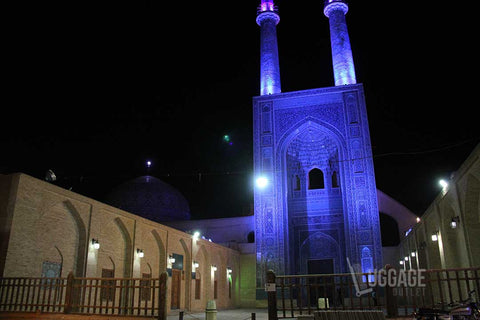
Incredible hand-painted mosaic artwork
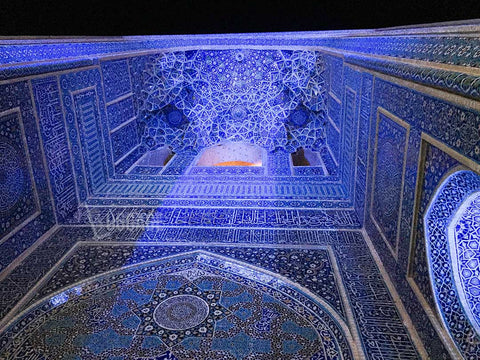
The view of the mosque in the day (below), again with very intricate mosaic tile designs set on imposing structures.
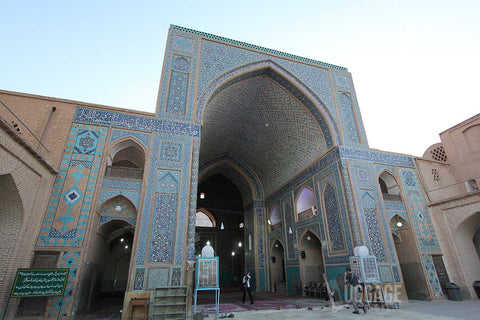
Zoroastrian Fire Temple (Yazd Atash Behram)
Zoroastrianism, one of the oldest religions in the world (at 3500 years old), is a religion that seems to have influenced several other religions such as Judaism, Christianity and Islam. It was the state religion of the Persian empire. In this Zoroastrian temple (100,000 IRR / S$4.40 per pax), you can learn about the history of this religion and the typical offerings used.
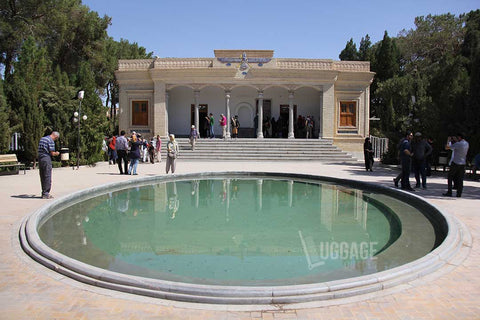
The Faravahar, the symbol at the top of the temple, symbolizes good thoughts, good words and good deed, which are the tenets and principles of Zoroastrianism.
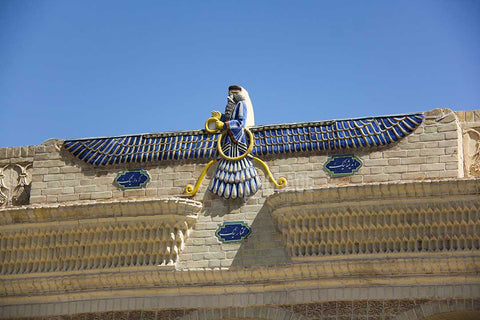
In the temple, there is a sacred fire that is said to be burning since AD470.
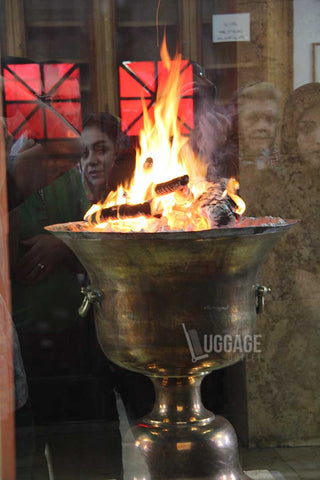
Tower of Silence (Dakhma)
Tower of Silence (100,000 IRR / S$3.40 per pax) is essentially a grave for the Zoroastrians in the past. At the top of the hill is a circular raised structure where bodies of the dead are placed and exposed to the sun and to scavenging birds. This was the safest way to prevent the pollution of earth or fire, according to the followers. It could take as long as a year before the body is fully disintegrated and washed out to the sea. This practice was discontinued in earlier 20th century and replaced with burial or cremation.
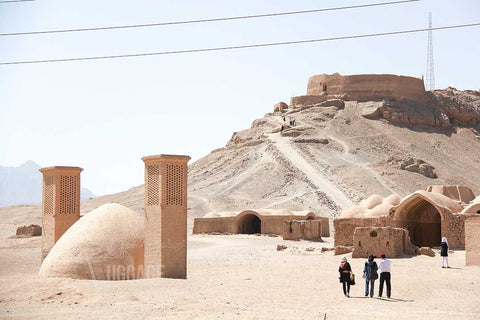
View of Yazd city from the top of the tower
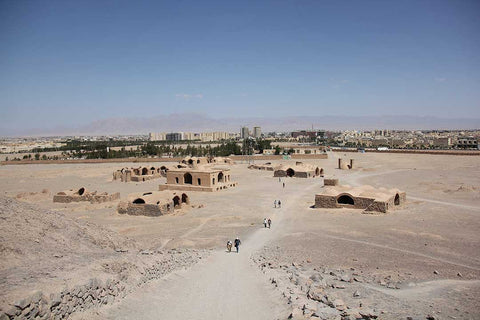
Here was where the Zoroastrians would leave the dead bodies to be exposed to the sun and scavenging birds, and after a year, they would be moved to the centre (known as the pit).
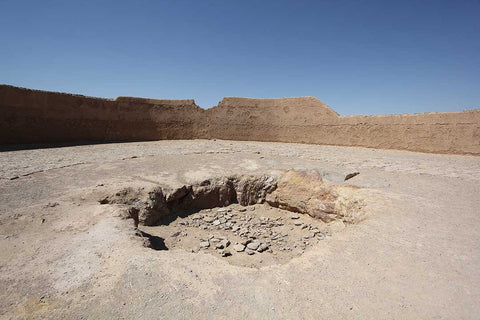
Dowlat Abad Garden
Dowlat Abad Garden (200,000 IRR / S$6.80 per pax), is one of the 9 Persian gardens collectively listed as a UNESCO World Heritage Site. It also has similar elements as with other Persian Gardens - rows of trees lined on both sides of the water feature, courtyard and a complex irrigation system. This garden design has influenced overseas gardens as well, most notably Taj Mahal of India.
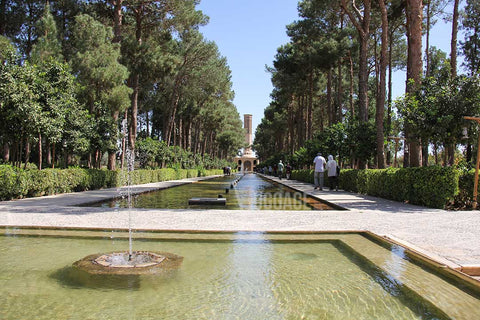
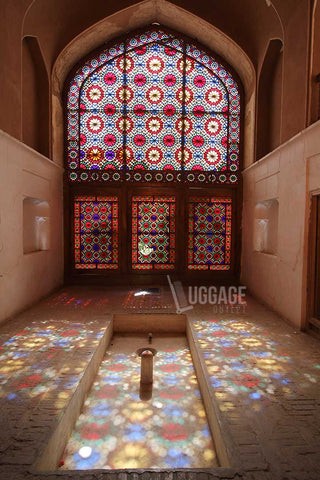
The scenery is so beautiful and calming that couples take pre-wed shots here.
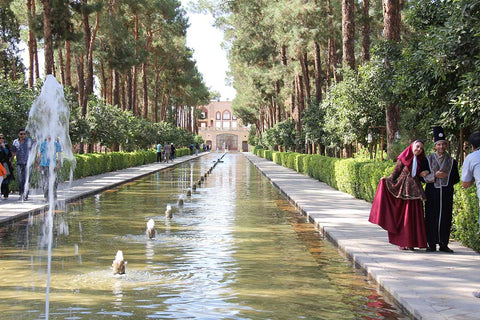
Amir Chakhmagh Complex is a prominent structure in Yazd, with the symmetrical sunken alcoves and beautiful lighting in the night, albeit a slightly one-dimensional facade (beyond the facade was a block of single-storey shops). The picture below would have been easily mistaken as one set in the 80s/90s, but this was actually taken in 2015.
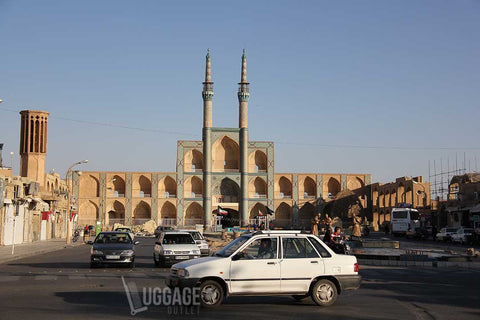
Yazd Water Museum (150,000 IRR / S$6.50 per pax) is located just opposite of the Amir Chakhmagh Temple. While the exterior of the museum looks inconspicuous, the exhibits in the museum tell an impressive history about how the Persians survived in this desert city with the underground water system - Qanat, another UNESCO World Heritage site. These primitive underground water tunnels channel the water from highlands to the city, providing precious, reliable supply of water to human settlements and irrigation in hot and arid climates.
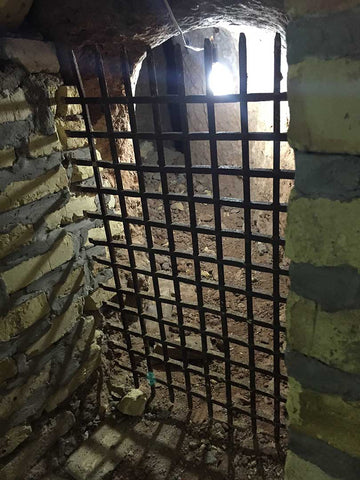
Saheb A Zaman Zoorkhaneh (Traditional Gym)
Another place well-worth visiting is the traditional gym (50,000IRR / S$2.20 per pax) that is still in use today by the Iranians. It is located just next to the Amir Chakhmagh Complex.
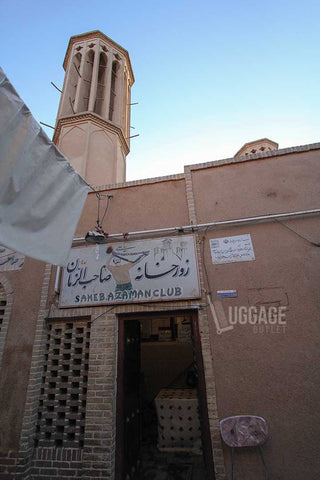
On days where gym classes were held, the participants had to swing the meels - bowling-pin shaped wooden clubs - on the bottom left of the picture below in circles, and it was definitely not an easy feat.
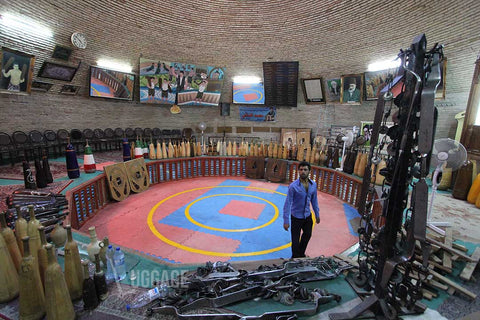
Underneath the gym is a water reservoir which is open to visitors, and from the exterior of the gym the windcatchers were also visible. These windcatchers would channel cool air into the gym and reservoir, and serve as their 'natural air conditioner'.
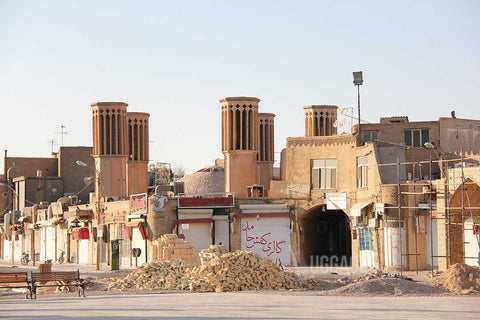
Last but not the least, the most memorable time we had in Yazd was getting lost in the complex maze.
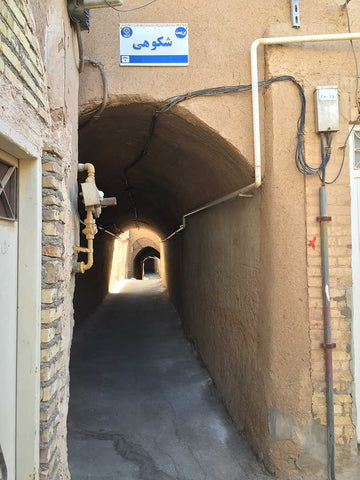
These passageways served not only pedestrians but also cars. Our cab driver even reversed onto another car while manoeuvring a tight bend, but seems like it's normal for cars to bump each other.
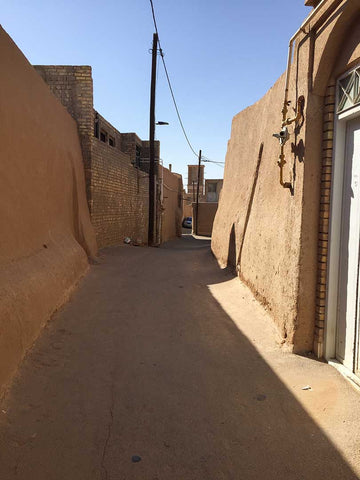
It would have been a scary experience to navigate in these 'confusing' streets at night if we were in other countries, but in Iran we have full trust in their people.
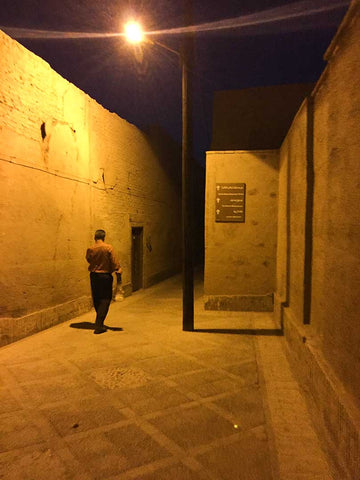
Food-wise, the speciality we've stumbled upon while navigating through the city centre was a couple of sweet shops, selling Shirini Yazdi (Yazdi sweets) that were freshly prepared. However, we would caution you not to buy it as souvenirs, as they are really sweet and not sure if everyone would appreciate it in Singapore (especially with the 'war on diabetes')!

En-route to our next destination, Pasargadae, apart from even more adobe architecture, we drove past these huge dome-like structures, known as Yakhchal. It is an ancient 'fridge', used for storing ice, as well as food, in this desert environment during summer.
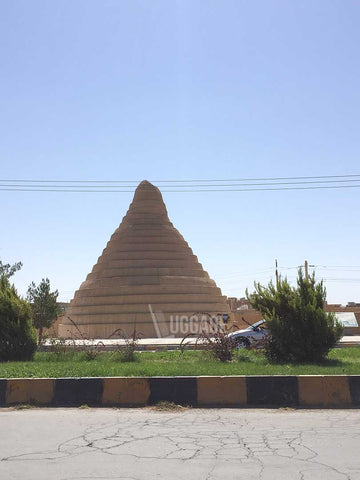
We also took a brief stopover at this towering 4000-year-old Cypress tree, which is the third oldest tree in the world. Measuring 25 metres tall with a circumference of 18 metres, it's amazing how cypress trees can be so resilient and withstood all kinds of weather changes.
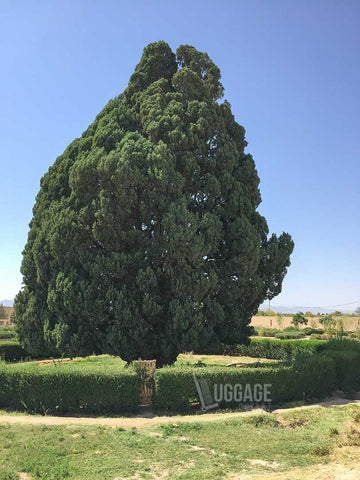
If you're into ancient religions and/or the way people in arid climates live, make Yazd one of your must-see stops!
Next stop: Ancient ruins of Pasargadae, Naqsh-e Rustam and Persepolis

